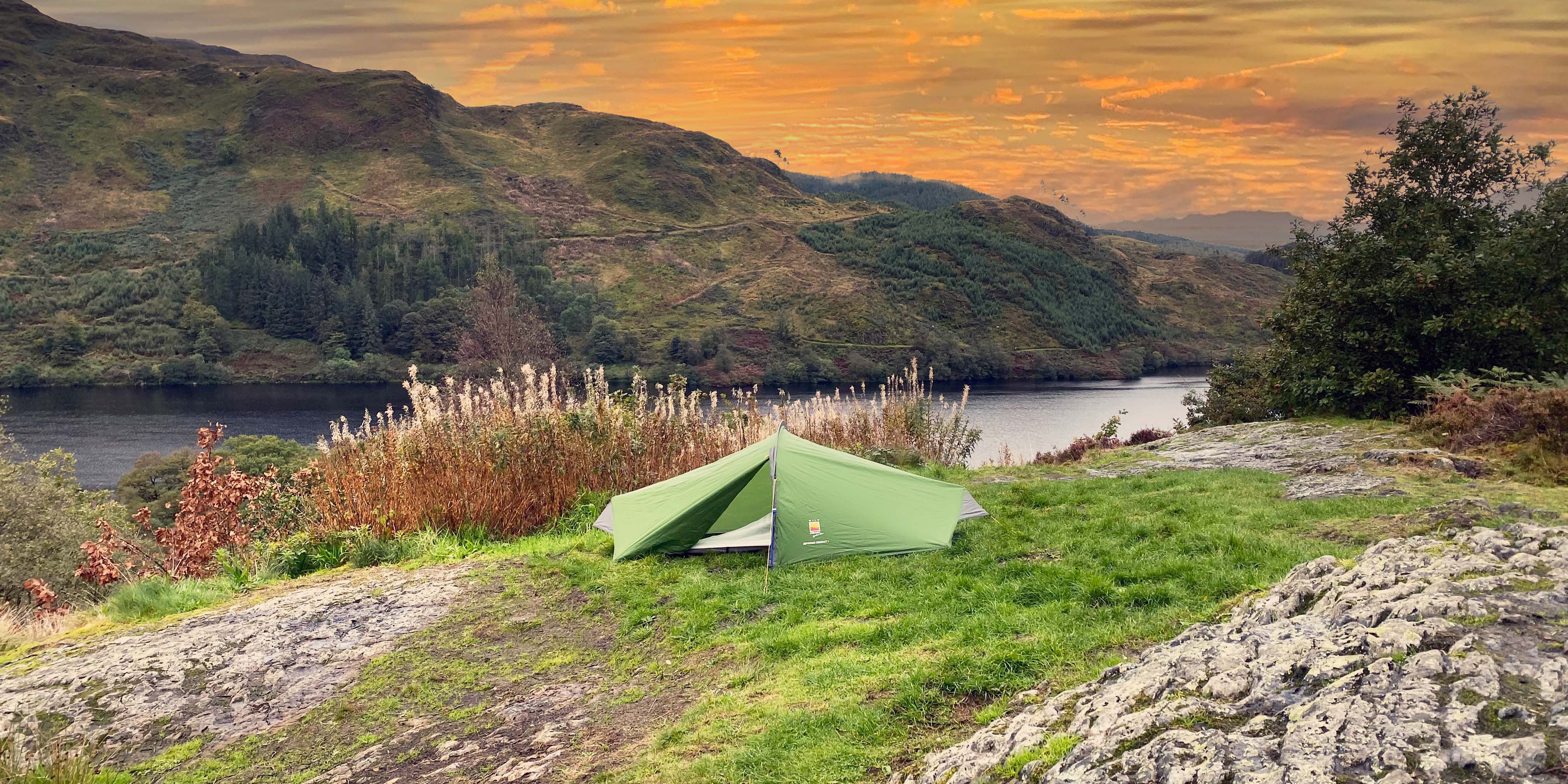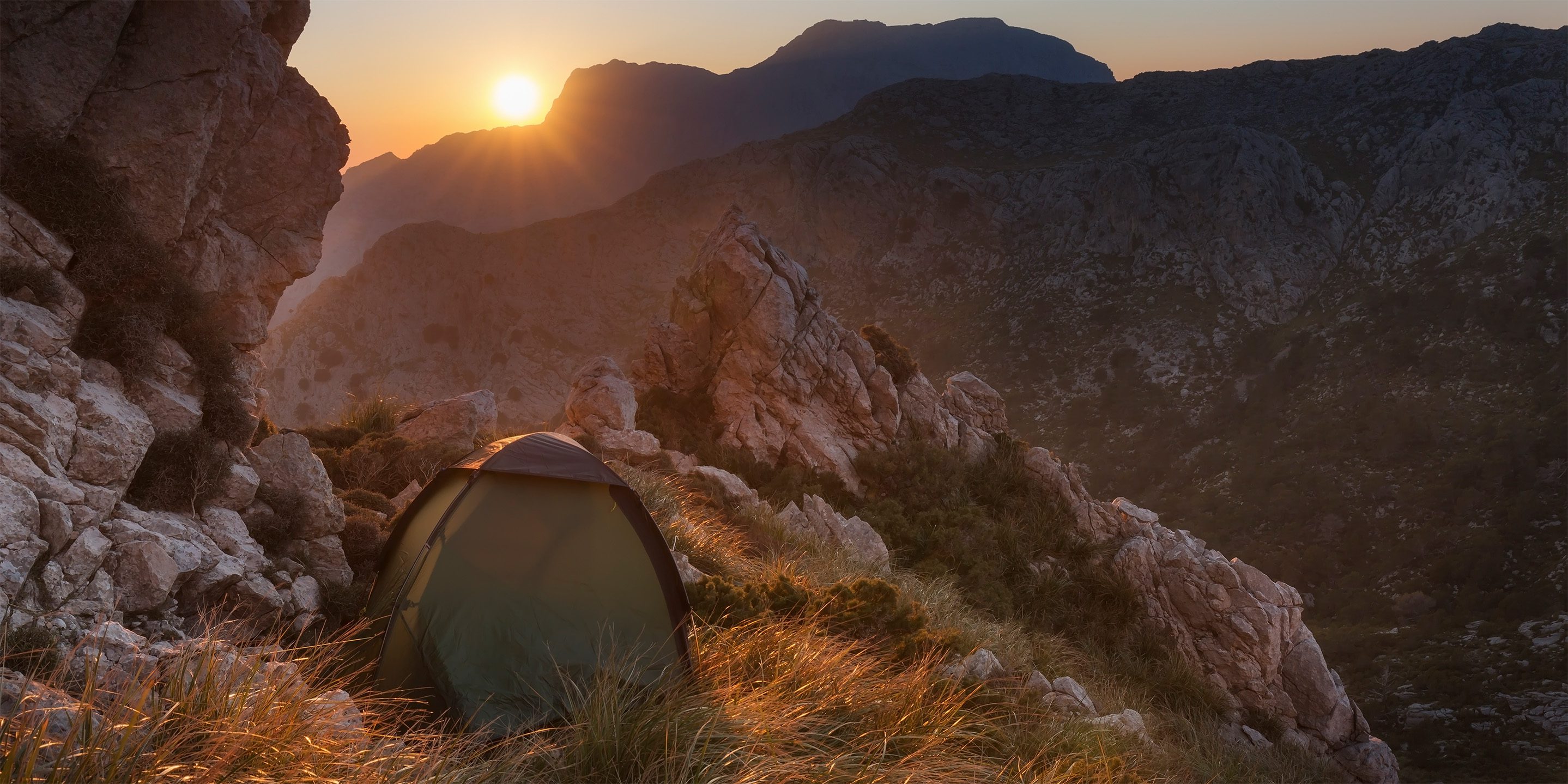Free Delivery Over £50*
Camping can be a great way to enjoy the outdoors and escape your busy life. However, pitching your tent in the first spot you come across isn’t the best idea. Some spots can turn out to be dangerous, disturb local wildlife or simply provide a lack of comfort. Discover the worst places to pitch a tent and make sure your next adventure is one to remember:
Let’s start with the most obvious place where you shouldn’t camp. Somewhere that will lead to you getting in trouble with the police or the law. We always recommend checking if you are allowed to camp where you are planning to set up your tent for the night, for example, asking the landowner. The last thing you want to wake up to is an angry farmer, or to unzip your tent to find you are surrounded by a herd of cows.
Pitching your tent in low-lying areas like ditches, valleys or sunken areas may seem like a good idea to get out of sight, away from the wind and side rain, but this is never the case and will make your situation much worse. They can fill up with water very quickly and the water will easily find its way into your tent. The last thing you want to happen when out in bad weather is getting all your gear soaking wet.
Rivers and streams are very similar to low-lying areas. It might seem like a good idea to pitch near a river and fall asleep to the calming sound of flowing water. But a calm-flowing river can quickly turn into a raging, fast-flowing river when the wind and rain start picking up. If you pitch close to a river, you’re at risk of being washed away at night, and being stuck in a tent at night in a fast-flowing river is the last place anyone wants to be.

Pitching under trees is a no-go zone. Gravity is a great thing, but not if you’re pitched under a massive tree branch that has just snapped off the tree. Falling tree branches have killed and injured campers who chose a spot under a tree. Lightning strikes and wind gusts can easily break branches off trees and can even unroot them in a storm. Tree sap is also a big one to avoid. It will leave a sticky substance on your flysheet that is nearly impossible to clean off.
The double-edged sword of wild camping. On one side you get stunning views with great sunsets and sunrises but on the other side, you have no protection from the elements. The wind can pick up during the night which can rip out your tent pegs and destroy your tent, leaving you exposed on top of a mountain. There have been some instances where tents have been lifted into the air by the wind with people still in them. We always recommend finding spots that are safe and sheltered from the wind.
The farther away you are from roads and civilisation, the better. It will help ensure comfort and will reduce the chance of someone stumbling across your camp during the night. Staying well away from these areas will keep you out of bother.
Camping under cliffs can potentially be deadly. Falling rocks can crush your tent in the middle of the night. Regardless of if you are in the tent at the time or not, falling rocks are never good for you and your tent.

Camping on sharp objects, like rocks, can damage the groundsheet on your tent and can cause it to leak over time. We recommend checking your pitch for sharp objects before setting up and only pitching your tent if there is nothing that could damage your groundsheet. You should also add a footprint to your set-up to avoid any unwanted holes in your tent.
Camping on delicate ecosystems such as sand dunes, wetlands or nature reserves can lead to permanent damage to the environment. These areas are often slow to recover and can be easily damaged by the presence of humans. To avoid damaging the environment, it’s important to follow “leave no trace” principles and choose a more durable spot.
Soft ground is great for comfort, but if it is too soft it can cause issues with your pegs. Your pegs can be pulled out by gusts of wind if the ground is too soft. We always recommend checking the round with a peg before pitching in a spot. Test the hold by putting the peg into the ground as you normally would, if it pulls out too easily, move to another spot.
Pitching up on uneven ground is uncomfortable and is generally a terrible idea. Even on a slight hill, you are going to slide on your sleeping mat and push up against the flysheet, which causes the condensation to saturate the inner tent. If you have ever camped on uneven ground, you will know how bad the back aches are in the morning.
After a long day of hiking, it is easy to choose the first spot that you find but think about changing weather conditions, ground conditions and wildlife. Most of the time a quick evaluation of your surroundings can save you from trouble later in the night.
Now you know the worst places to pitch a tent, read the best places to pitch a tent here.